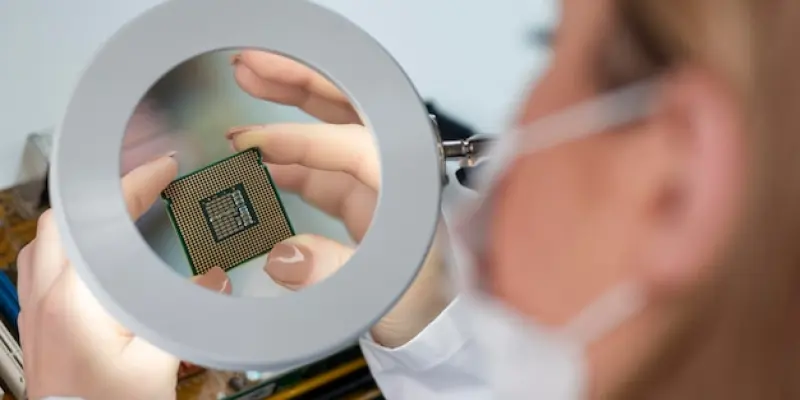Samsung is setting out to redefine the trajectory of virtual reality by introducing revolutionary advancements in micro-OLED technology, potentially reshaping VR experiences. The quest for achieving near-daylight brightness levels in VR headset displays presents a formidable challenge, primarily due to the need to replicate the clarity and sharpness found in conventional screen setups when screens are positioned much closer to the eyes. Current VR headsets like the Meta Quest 3 and Apple Vision Pro have made substantial strides with resolutions of 2,064×2,208 per eye and 3,660×3,200 per eye, respectively. Despite these advances, Samsung aims to establish a new standard with its OLED display, promising peak brightness levels up to 20,000 nits, along with beyond-4K resolution in a compact size. This breakthrough is achieved through OLEDoS technology—OLED on Silicon—that integrates OLED layers directly onto silicon wafers, resulting in a pixel density ideal for VR applications.
Unmatched Brightness and Resolution
Two headset versions are being offered by Samsung: one with a 15,000-nit brightness and the other boasting 20,000 nits, featuring pixel densities of 5,000 PPI and 4,200 PPI, respectively. Such intense brightness is crucial, considering the significant optical inefficiencies found in VR headsets, including a notable 90% loss through pancake lenses. Consequently, Samsung’s panels could deliver visible brightness ranging from 300 to 400 nits within the headset, outperforming current market alternatives. This enhancement is vital for improving the realism of motion rendering and perceived daylight in mixed reality environments. Moreover, Samsung’s demonstration units achieve a resolution of 3,888×3,888 pixels per eye, utilizing true RGB subpixel layouts. This approach contrasts sharply with current premium headsets employing white OLEDs with color filters, offering superior color accuracy. With 99% DCI-P3 color gamut coverage, Samsung’s innovation surpasses Apple’s 92% range.
Challenges in Manufacturing
Despite such impressive technological feats, the manufacturing of true RGB micro-OLEDs is fraught with complexity and high costs, limiting their availability to research and development rather than enabling mass production at present. This situation poses a significant hurdle for wide-scale adoption, with Samsung’s endeavor potentially transforming VR display technology if these challenges can be overcome. The integration of capable micro-OLED displays holds promise for elevating the fidelity and immersion of virtual reality experiences. Future considerations might focus on optimizing production processes to bring these advances to mainstream markets. While the present hurdles are substantial, the potential for Samsung’s technology to redefine VR is indeed profound, promising a shift in how virtual interaction is perceived and experienced.

